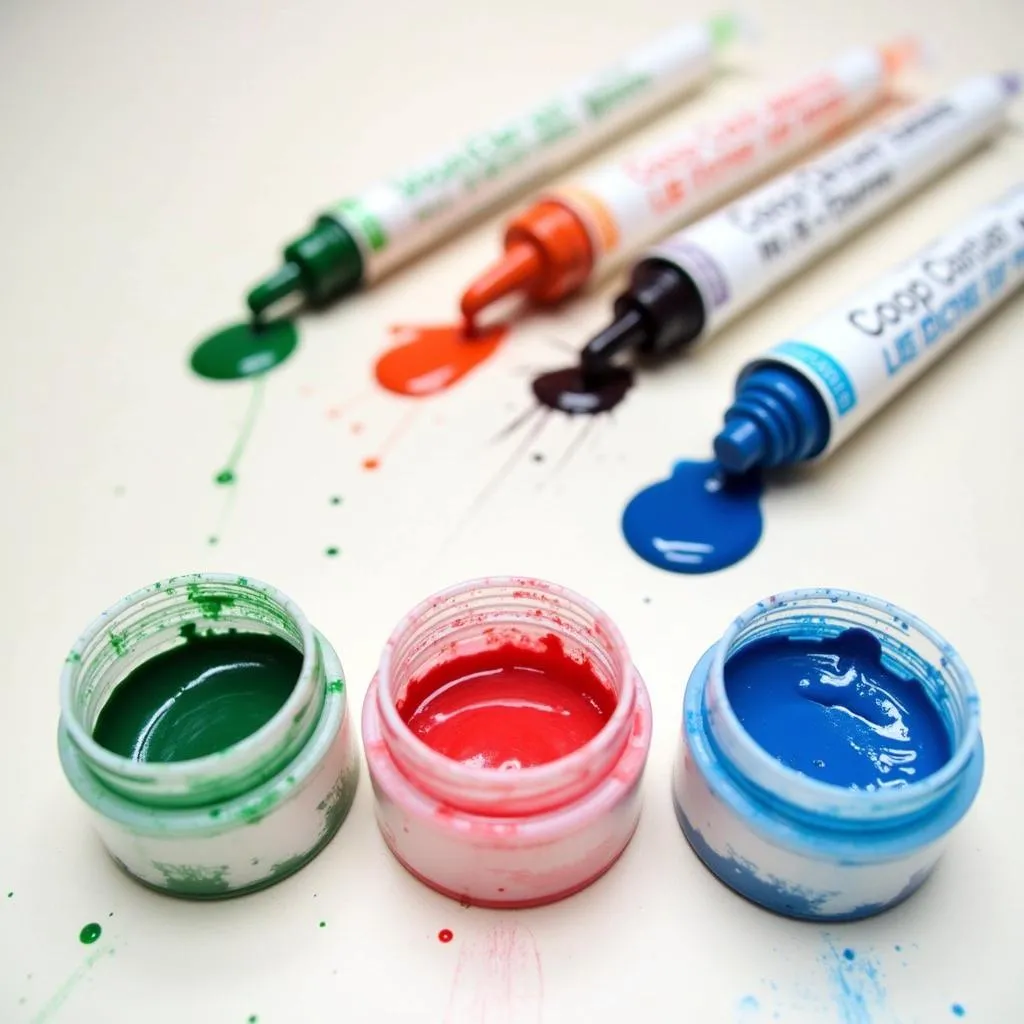Creating the perfect orange icing can seem tricky, but with a few simple tips, you can achieve a vibrant and delicious topping for your baked goods. Whether you’re aiming for a pale peach or a bold citrus hue, this guide will provide you with all the information you need to make orange color icing that will impress.
Understanding Food Coloring
Before diving into the specifics of orange icing, it’s helpful to understand how food coloring works. Food coloring typically comes in liquid, gel, or paste form, each with its own pros and cons.
- Liquid food coloring is readily available and affordable, but it can dilute the consistency of your icing if you use too much.
- Gel food coloring is more concentrated, allowing you to achieve vibrant colors with just a small amount.
- Paste food coloring is the most concentrated form, often used by professionals for its intense pigmentation and ability to color large batches.
 Types of Food Coloring
Types of Food Coloring
For orange icing, gel food coloring is often the best choice as it provides a good balance of color payoff and ease of use.
Methods for Making Orange Icing
There are two primary ways to make orange icing:
1. Starting with White Icing
This is the most straightforward method, especially if you’re new to working with food coloring. Begin with a batch of your favorite white icing, whether it’s buttercream, cream cheese frosting, or royal icing. Then, gradually add drops of orange gel food coloring, mixing thoroughly after each addition, until you reach your desired shade.
Pro Tip: It’s always a good idea to start with a small amount of coloring and gradually add more. It’s easier to darken the icing than to lighten it!
 Adding Orange Gel Coloring to White Icing
Adding Orange Gel Coloring to White Icing
2. Mixing Primary Colors
If you’re feeling adventurous and want to experiment with color customization, you can create orange icing by combining red and yellow food coloring. Start with a base of white icing, then add drops of red and yellow gel coloring, mixing thoroughly until you achieve your desired orange hue.
Remember: The ratio of red to yellow will determine the final shade of orange. More red will result in a warmer, reddish-orange, while more yellow will create a brighter, yellowish-orange.
Tips for Vibrant and Long-Lasting Color
- Use high-quality food coloring: The quality of your food coloring can significantly impact the vibrancy and longevity of your icing color. Investing in reputable brands will yield better results.
- Allow the color to deepen: After mixing your icing, let it sit for a few minutes. The color will often deepen slightly as the dye settles.
- Avoid direct sunlight: Exposure to sunlight can cause food coloring to fade. Store your frosted treats in a cool, dark place until ready to serve.
Troubleshooting Common Issues
- My icing is too pale: Gradually add more orange food coloring, a few drops at a time, until you achieve your desired shade.
- My icing is too dark: If you’ve accidentally added too much coloring, you can try to lighten it by incorporating small amounts of white icing until you reach the desired shade.
- My icing is streaky: This usually happens when the food coloring isn’t fully incorporated. Continue mixing the icing until the color is uniform.
Conclusion
Mastering the art of making orange color icing is easier than you might think. By understanding the basics of food coloring and following these simple tips, you can create vibrant and delicious treats for any occasion. Remember to experiment, be patient, and have fun with the process!
FAQs
1. Can I use natural food coloring to make orange icing?
Yes, you can use natural food coloring options like carrot juice or paprika to achieve an orange hue. However, keep in mind that natural food coloring might not be as vibrant or long-lasting as artificial options.
2. Can I make orange icing ahead of time?
Yes, you can make orange icing ahead of time and store it in an airtight container in the refrigerator for up to 3 days. Before using, let it come to room temperature and give it a good stir to restore its consistency.
3. What other colors can I make by mixing food coloring?
You can create a wide range of colors by mixing primary food coloring (red, yellow, blue). For example, you can make green by mixing blue and yellow, or purple by mixing red and blue.
Looking for more colorful inspiration? Check out our other guides:
Need help with a specific color challenge? Contact us at 0373298888 or [email protected]. Our team at Color Box Hanoi is here to assist you with all your color needs. You can also visit us at 86 Cầu Giấy, Hà Nội. We are available 24/7 to help you create vibrant and inspiring spaces.

